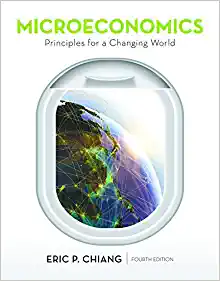Answered step by step
Verified Expert Solution
Question
1 Approved Answer
Module 10. FINANCIAL INTERMEDIATION, MONEY & THE FEDERAL RESERVE SYSTEM What is money and why is it important to our economy? Are savings accounts money?
Module 10. FINANCIAL INTERMEDIATION, MONEY & THE FEDERAL RESERVE SYSTEM
- What is money and why is it important to our economy?
- Are savings accounts money? Explain.
- Is U.S. currency backed by gold or anything else? Why do people work hard to get it?
- What is the primary role of our banking system?
- Explain how banks can create money.
- What is the money multiplier? How is it calculated? How is it related to the creation of money?
- Describe the structure and roles of the Federal Reserve.
- What is a stock? What is a bond? Why would a company prefer to issue one over the other? Why would a person prefer to buy one over the other?
- What is limited liability and why is it important for the stock market?
- What is the Principle-Agent Problem?
- What is The Efficient Markets Theory? What is a Mutual Fund? How are these two concepts related?
Module 11. THE AGGREGATE DEMAND AND SUPPLY MODEL
- What does an aggregate demand curve represent?
- What are the three reasons the aggregate demand curve is downward sloping?
- What government policies can shift the aggregate demand curve?
- What does the aggregate supply curve represent?
- Why is the short-run aggregate supply curve different than the long-run aggregate supply curve?
- When aggregate demand shifts to the right, what happens to price level, output, and unemployment in the short-run? (Note that employment is not explicitly shown on the AD/AS model but will generally move in the same direction as output.) Does your answer depend on whether the economy is currently in a recession or at its potential GDP?
- When the short-run aggregate supply shifts to the right, what happens to price level, output, and unemployment?
Module 12. MONETARY POLICY
- Who is responsible for setting monetary policy in the U.S.? How is this group chosen?
- If the Fed wants to increase the money supply, list and describe 3 ways they can accomplish this.
- Under what economic conditions would the Fed wish to increase (expansionary policy) or decrease (contractionary policy) the money supply?
- How would an increase in the money supply likely affect interest rates, investment, aggregate demand, the price level, output, and employment?
- Why might monetary policy fail? What does "inflation targeting" mean?
Step by Step Solution
There are 3 Steps involved in it
Step: 1

Get Instant Access to Expert-Tailored Solutions
See step-by-step solutions with expert insights and AI powered tools for academic success
Step: 2

Step: 3

Ace Your Homework with AI
Get the answers you need in no time with our AI-driven, step-by-step assistance
Get Started


